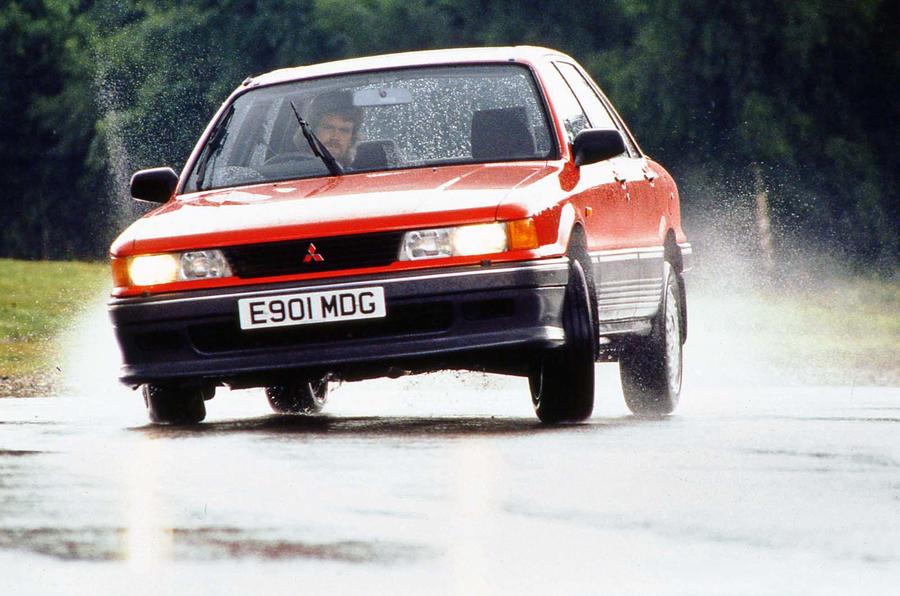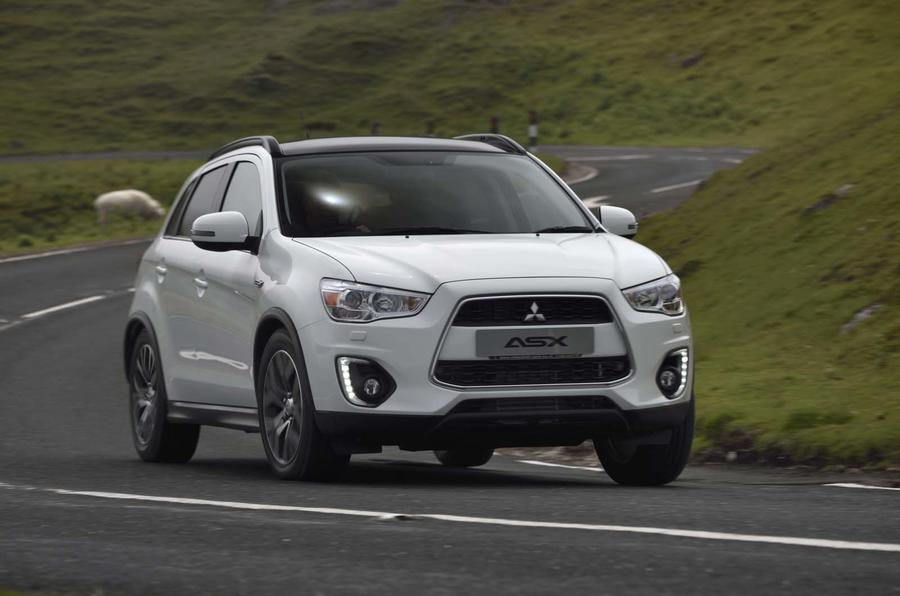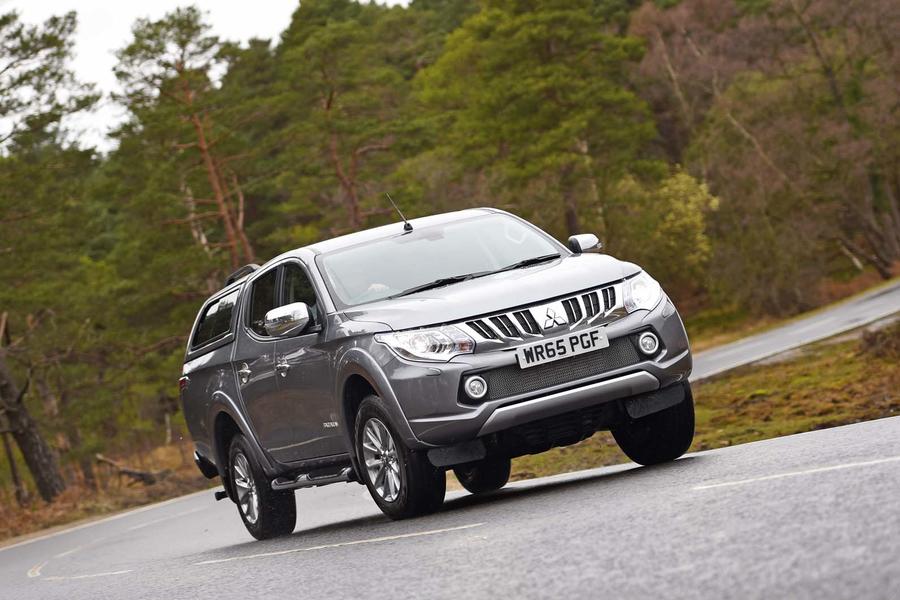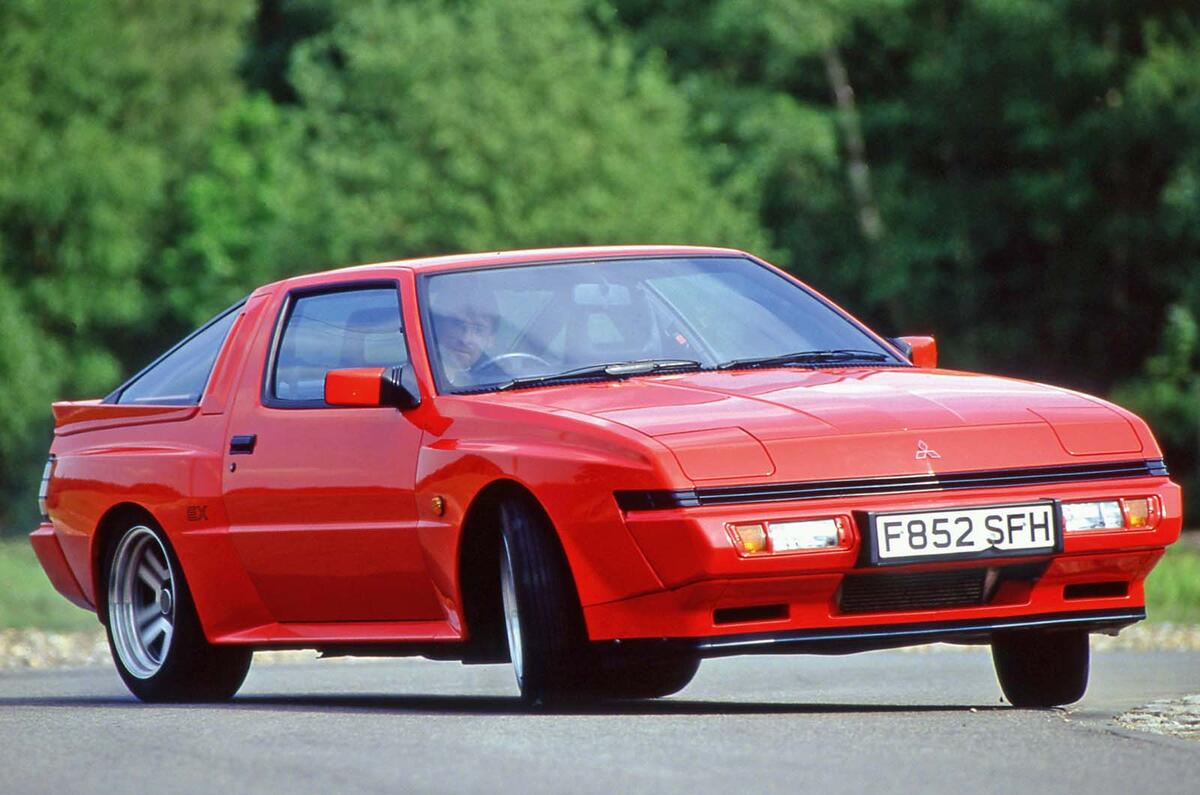In the second half of the 1990s, Mitsubishi was a brand on the rise. It used its long history of making highly capable four-wheel-drive off-roaders to produce the Lancer Evo, which claimed four straight World Rally Championship titles with Tommi Mäkinen at the wheel and, in road car form, a legion of fans.
But even then, the brand presented a conundrum. The Japanese firm has always been engineering led, capable of innovation and greatness: remember the Lancer Evo, the ultratough Mitsubishi Shogun, the venerable Mitsubishi L200 pick-up and, recently, the Outlander PHEV plug-in hybrid? But when it strays from its engineering expertise, the results are far less inspiring. 
It was hard to square the unforgettable Evo with the largely forgettable standard Lancer, or draw a link between the go-anywhere Shogun and underwhelming city cars such as the late-era Colt. As a result, the key models perhaps became more notable than the brand, so when the Lancer Evos went out of production, in the UK Mitsubishi reverted to being a relatively niche firm largely selling highly capable off-roaders in rural areas – until the arrival of the game-changing Outlander PHEV.

The firm has long had other challenges. Its disparate line-up is a legacy of an uneven global growth pattern that led to different markets focusing on different products with differing successes. In Germany, for example, around half the firm’s sales are of the Spacestar – née Mirage – city car. That piecemeal approach, fuelled by a series of tieups and partnerships with other car firms, helped Mitsubishi to grow, but it wasn’t a recipe for long-term sustained success. And it showed. When the Asian economy faltered in the late 1990s, Mitsubishi faltered. It suffered again in the 2008 global financial crisis, shut down its Ralliart division in 2010 and sold off its only European production plant in 2012.
Those steps were taken so that Mitsubishi could focus on its core: four-wheel drive, SUVs and pick-ups. That led to some successes – particularly with the Outlander PHEV. But despite the Shogun helping to spark the rise of the SUV, Mitsubishi was late to the crossover party, with the Mitsubishi ASX and, more recently, Eclipse Cross failing to stand out.

Then, in 2016, Mitsubishi was hit by a fuel economy scandal, when Japanese officials found that it had falsified test data on a series of Japan-only models. The firm’s share price fell sharply and the future looked bleak – until it suddenly became a lot more positive.
Shortly after the crisis, Nissan bought a 34% stake in Mitsubishi, becoming its largest shareholder, and the firm became part of what is now known as the Renault-Nissan-Mitsubishi Alliance, one of the world’s three largest car groups. The deal led to new leadership under alliance chief Carlos Ghosn and a renewed direction – which, senior vice-president Guillaume Cartier says, involves allowing the firm to keep its “Mitsubishi-ness”. If not, he says, “we’re in danger of cannibalisation within the brands”.

Chief operating officer Trevor Mann adds: “We’re not converged. We’re three companies with three different identities trying to maximise the opportunities of working together to grow each brand.” For Mitsubishi, being in the alliance gives it a purchasing power that far exceeds its small size and technology sharing what Mann calls a “turbocharger” for engineers. The other key development will be a transition to common platforms: the next-generation Mitsubishi Outlander will share the latest version of the CMF platform with the next-gen Nissan X-Trail and Renault Koleos.
However, Mann insists that Mitsubishi won’t simply be reduced to turning out rebadged Renault or Nissan models. He says: “I guarantee you that customers will not know it’s a common platform.”
Although Mitsubishi is the smallest of the three alliance companies, Mann says that it can teach Renault and Nissan as much as it can learn from them. “It’s a development mindset: Mitsubishi tends to start with the basic – a platform, four wheels and so on – and builds up from there. What do we need to add for each market? It’s built from the bottom up, which gives a very good cost structure. A lot of manufacturers try to make a global car from the start, then say ‘that market doesn’t need that’, but you can never take it all off.”

Within the alliance, each firm will take the lead on projects it has expertise in. In the case of Mitsubishi, it is likely to head up development of the next-generation pick-up platform, four-wheel-drive technology and plug-in hybrids. The use of common platforms and standards also opens the possibility of Mitsubishi models being produced in Renault and Nissan factories, which could further reduce costs in each market.
The new leadership has also renewed Mitsubishi’s commitment to its key pillars: 4x4, high-capability SUVs and hybrid engines. “We’re an SUV brand,” says Mann, “but, at the moment, who’s not an SUV brand? Who really has the authenticity in SUVs? We have a differentiation because of our heritage, ruggedness and ability.”
It’s a direction that’s working: global sales were up 19% year on year in the first half of 2018. Mann says: “We need to continue to grow. We can’t be satisfied just being a one-million-unit company.”

Growth means new models – Mann says that he’d ideally like four to six “relevant” cars in each market – which means expanding beyond its key specialities. The challenge is made bigger by the seismic changes the industry is undergoing, particularly in terms of electrification (see separate story, above). That’s an area Mitsubishi has heritage in, with both the Outlander PHEV and the pioneering 2009 i-Miev city car – an ahead-of-its-time EV the firm failed to capitalise on.
Instead of pure-electric models, Mitsubishi’s strategy is to offer electrified powertrain options alongside combustion engines, with varying levels depending on the model. So the Outlander is likely to remain a PHEV, with hybrid offered on small SUVs (a production version of the eX concept, a Nissan Juke rival, is due by 2020), and full-electric city cars.
Mitsubishi is currently evaluating the development of that small car. Although ‘standard’ cars vary from its SUV focus, Vincent Cobee, Mitsubishi’s strategy boss, suggests it would be a “complementary offer” to its core SUV product line, beneficial in both reducing fleet emissions and as a cheaper model to attract younger customers.

As history has shown, things don’t always go well when Mitsubishi strays from its specialities, but you sense that’s something the firm’s current leadership is aware of. Mann admits that deciding what to do about traditional cars and the Shogun are “headaches we have at the moment”, noting ‘placeholders’ on such issues are set in the firm’s long-term plan. “You’ve got to allow your engineers time to think,” he says. “Sometimes they’re coming up with ideas, and when we evaluate the business plan, we say no. That doesn’t mean we scrap the placeholder. It means we go away and think again. That’s where you stress the company and get your good and innovative ideas.”
And when Mitsubishi develops innovative ideas, good things happen. “We are strange, in a positive way,” says Cartier. “We were ahead with EV and are a leader in PHEV. There is no reason why, being so small, we have lead in those areas.”

The difference now is that the alliance can give Mitsubishi the scale to capitalise on its engineering prowess. “We’ve injected some vigour and ambition into the company,” says Mann. “We’re going in the direction we’re trying to achieve.”
Scope for more growth in the UK
The success of the Outlander PHEV has been good news for Mitsubishi’s UK arm. The popularity of the SUV, along with the launch of the new Eclipse Cross and refreshed Shogun, means the firm’s total vehicle sales (including the L200) are nearly 20% up year on year.
Rob Lindley, Mitsubishi’s new boss in the UK, says that’s a reflection of the company’s renewed focus at global level. “Everyone now understands what the brand stands for,” he says. “It’s four-wheel drive, pick-ups and PHEV technology – and the good thing is those are the market segments that are expanding.”

Lindley says that the UK division is “capable of delivering a lot more volume than we have today”, with aspirations to sell 50,000 cars per year within five years. One key to doing that will be expanding the dealer network, which remains rooted in smaller outlets in rural areas. “We need more representation in metro areas,” says Lindley. “If we can add more locations, we can cement our growth going forward.”
Electrification: go your own way
In the space of a week, the UK Government recently removed grants for buyers of plug-in hybrid cars such as the Outlander PHEV, while the French government added some – and dramatically changed how double-cab pick-ups are taxed.
“Welcome to my world,” sighs Vincent Cobee, Mitsubishi’s strategy boss, as he tries to convey the challenge of steering a car firm through the rapidly changing regulatory landscape. Clearly, though, electrification is coming: Cobee says the EU target for CO2 emissions by 2025 is below what a pure combustion engine can achieve.
So “every company needs to make a bet on the continuum of technology”, whether some level of hybrid, pure electric or fuel cell. “Then,” says Cobee, “you need to pick your steps.”
Mitsubishi’s jump to PHEV has put the firm on a different path from alliance partners Nissan and Renault. “They will take 12V hybrid and battery EV. We’re 48V and plug-in hybrid. That decision was made before the alliance, but we still have convinced people on either side saying ‘we picked the right stones’.”
Cobee adds Renault, Nissan and Mitsubishi will continue down their differing paths, albeit with technology transfer that effectively means they have covered each others bets. Which could be useful given how quickly things can change in just a few days.
Read more
Mitsubishi still aiming to develop new Shogun off-roader​

































Join the debate
Add your comment
What is the new colt? Is it a
What is the new colt? Is it a last gen micra in a slightly different suit? As they look similar to me. I've just got a 2012 colt cleartec as a run around, cheap to buy tax and run and with plenty of room, it drives really well and appears far superior to its replacement. It is a shame the imiev wasnt capitalised on, they're still quite expensive on the used market and being as tiny as they are they make a lot of sense as an alternative to the e smarts, and e up. Also a shame they no longer have a motorsport image, same as subaru, but like subaru they are, to me, seen as reliable no nonsense transport.